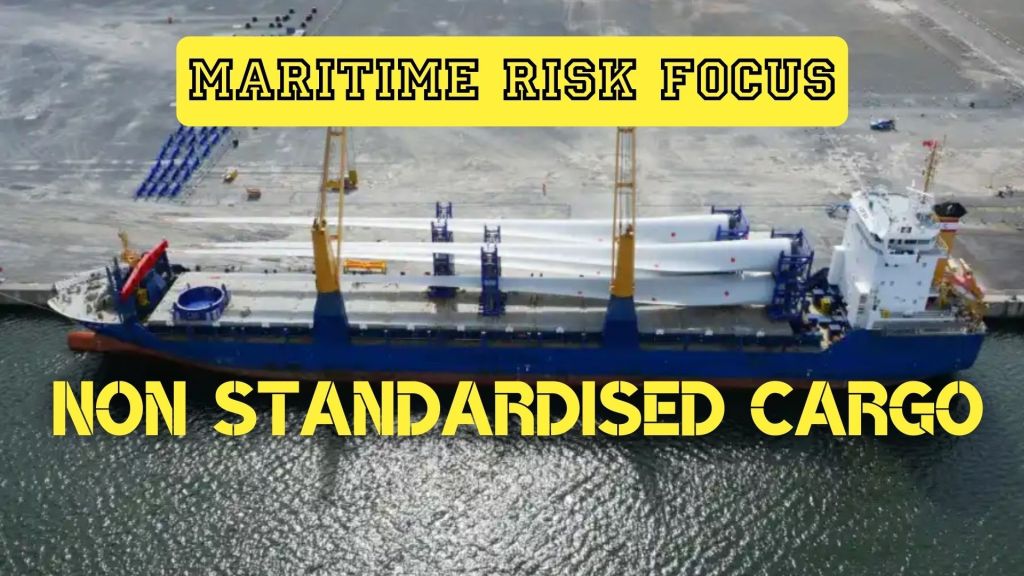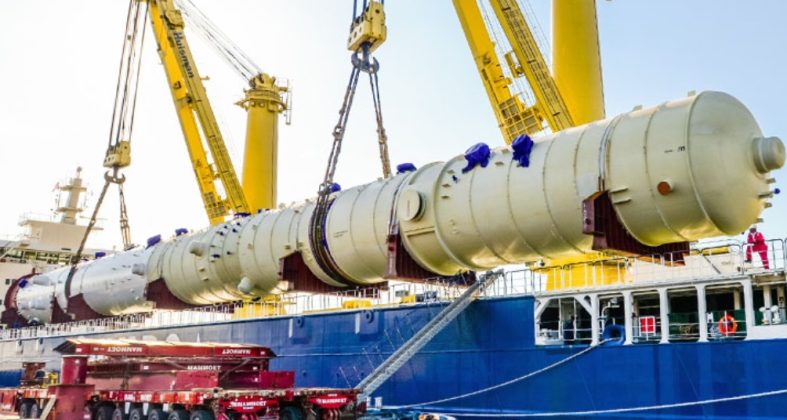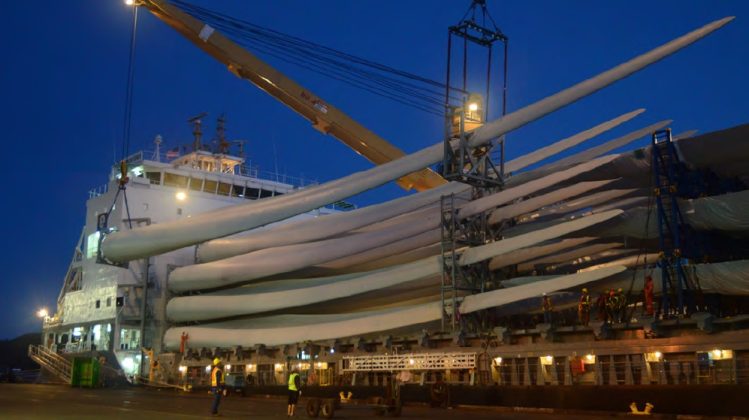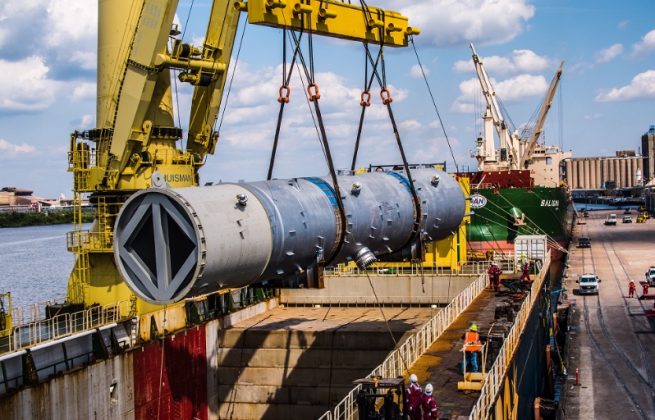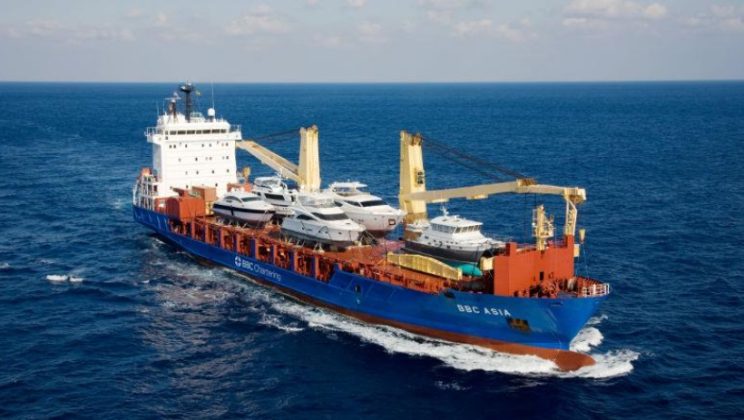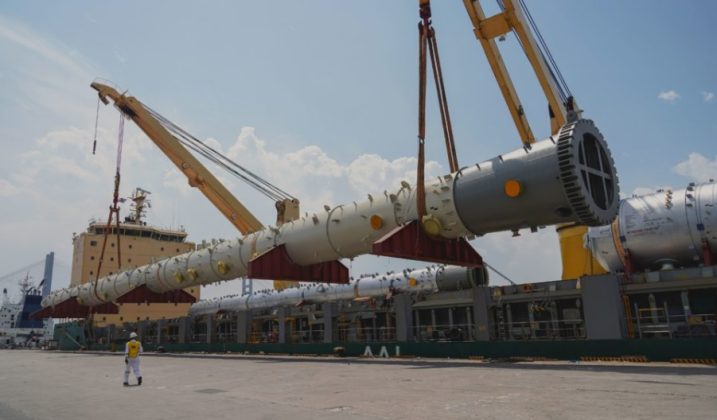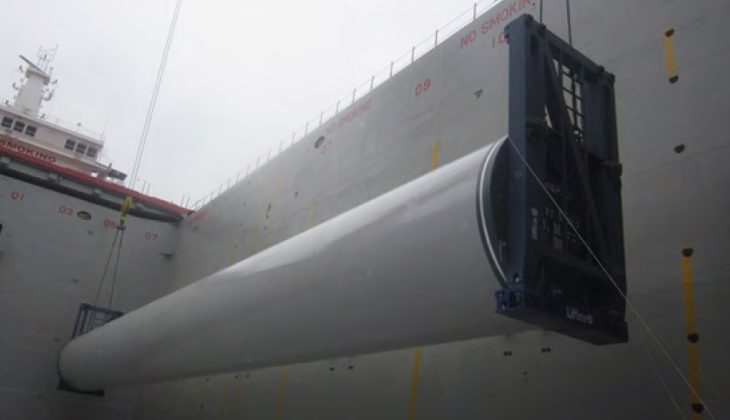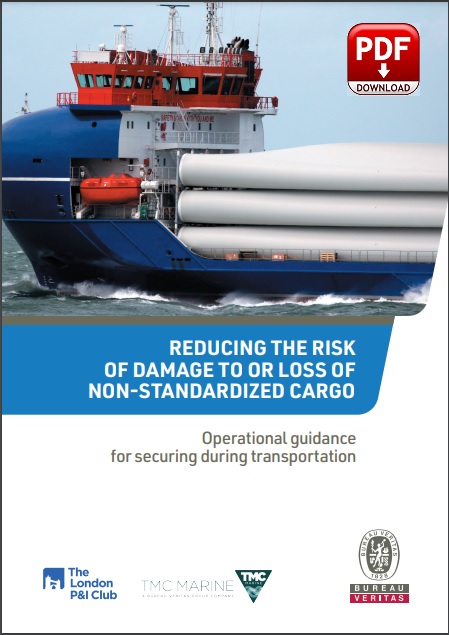
(www.MaritimeCyprus.com) As increasing numbers of vessels join the world fleet, cargo distribution across vessel types and classes becomes more varied and complex – not only are vessels becoming able to carry a wider range of cargoes, due to in part to their increasing flexibility but there is also a cascading of cargoes across the fleet. For the carriage of non-standardized cargoes, there are several significant risks.
A number of serious accidents have occurred as a result of inadequate securing arrangements on board and deficient stowage and securing of cargoes as well as causing injury and loss of life, not only at sea but also during loading and discharge. Only proper stowage and securing of cargo on adequately designed and properly equipped ships can prevent the occurrence of such accidents in the future.
The accelerations acting on a ship in a seaway result from a combination of longitudinal, vertical and predominantly transverse motions. The forces created by these accelerations give rise to the majority of securing problems. In addition, cargo carried on deck may be subjected to forces arising from the effects of wind and green seas.
The hazards arising from these forces should be dealt with by taking measures both to ensure proper stowage and securing of cargoes on board and to reduce the amplitude and frequency of ship motions.
Charterers must ensure that the ship is suitable for its intended purpose. In addition, ship owners and operators should tender only suitable vessels for cargoes. Appropriate precautions shall be taken during loading and transport of heavy cargoes or cargoes with abnormal physical dimensions to ensure that no structural damage to the ship occurs
and to maintain adequate stability throughout the voyage.
If a heavy cargo item has been dragged into position on greased skid boards or other means to reduce friction, the number of lashings used to prevent sliding should be increased accordingly.
Where necessary, the securing arrangements for heavy cargo items should be verified by an appropriate calculation.
These types of cargo are generally a defined single operation, carrying out of gauge non-standardized cargo, often for a specific project. The cargo may be carried on deck or under deck. Carriage of containers is excluded from the scope of this booklet as it is a topic on its own.
Cargoes which have proved to be a potential source of danger because of inadequate stowage or securing include:
- portable tanks
- portable receptacles
- cargoes on special wheel-based vehicles such as MAFI trailers or self-propelled modular
trailers (SPMTs) - wheeled heavy cargo items such as locomotives, mobile cranes, road construction or mining/quarrying equipment
- heavy machinery, transformers, etc.
- pre-assembled units (PAUs) for petro-chemical plant, offshore or factory installations
- wind farm components including towers, blades and turbine nacelle
- offshore mooring equipment including anchors, buoys and anchor chains
A ship in a seaway moves with six degrees of freedom, three translational and three rotational. All cargoes are subject to motion-induced forces and have to be secured to allow for sway, surge and heave (the translational motions) and roll, pitch and yaw (the rotational motions). The magnitude of the forces experienced by the cargo is obviously
a function of the ship motions (itself a function of the weather conditions experienced and the characteristics of the ship) but is also dependent on the location of the cargo within the ship. The forces can be limited by careful management of the parameters over which the Master has control, such as the stowage position, the vessel stability, weather routeing and heavy weather vessel handling.
For further information, you can download below the guidance by The London P&I Club and TMC Marine:
Source: The London P&I Club






